News
EPJ E - Electric charge disorder: A key to biological order?
- Details
- Published on 10 August 2012
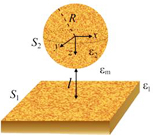
Strong attraction that arises between biological objects with random patches of electric charge on an otherwise neutral surface may partly explain pattern recognition in biology.
Theoretical physicist Ali Naji from the IPM in Tehran and the University of Cambridge, UK, and his colleagues have shown how small random patches of disordered, frozen electric charges can make a difference when they are scattered on surfaces that are overall neutral. These charges induce a twisting force that is strong enough to be felt as far as nanometers or even micrometers away. These results, just published in EPJE, could help to understand phenomena that occurr on surfaces such as those of large biological molecules.
EPJ Special Topics - Mitigating disasters by hunting down Dragon Kings
- Details
- Published on 10 August 2012

Scientists aim to forecast natural or economic disasters by identifying statistical anomalies.
Professional Dragon King hunter Didier Sornette from the Department of Management, Technology and Economics, ETH Zurich, Switzerland, together with his colleague Guy Ouillon, present the many facets of Dragon Kings in a review just published in EPJST. Their work has just appeared alongside nineteen other contributions exploring the ways in which this emerging field of statistical analysis could become further established.
EPJ B - Quantum information motion control is now improved
- Details
- Published on 10 August 2012
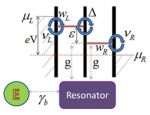
Model simulates closer control over the transport of information-carrying electrons.
Physicists have recently devised a new method for handling the effect of the interplay between vibrations and electrons on electronic transport. Their paper has been published in EPJB. This study, led by scientists from Zhejiang University, Hangzhou, China, and the Centre for Computational Science and Engineering at the National University of Singapore, could have implications for quantum computers due to improvements in the transport of discrete amounts of information, known as qubits, that are encoded in electrons.
EPJ A - A new technique for simultaneous measurement of neutron-induced capture and fission reactions
- Details
- Published on 10 August 2012

The accurate knowledge of (n,gamma) neutron-capture cross-sections for fissile isotopes is highly relevant for next-generation applications of nuclear technology. However, accurate measurements are difficult due to the gamma-ray background generated in competing (n,f) fission reactions. Scientists at the n_TOF facility at CERN have developed a new experimental setup that is capable of simultaneously measuring and identifying the capture and fission reactions.
EPJ E - Study on swirls to optimise contacts between fluids
- Details
- Published on 10 August 2012
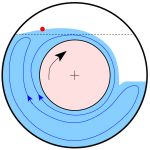
Model gives clues on how to optimize homogeneous feeding of cells in suspension from a liquid nutriments supply in a bioreactor.
Physicists who have studied the mixing between two incompatible fluids have found that it is possible to control the undercurrents of one circulating fluid to optimise its exposure to the other. This work, which has just been published in EPJE, was performed by Jorge Peixinho from CNRS at Le Havre University, France, and his colleagues from the Benjamin Levich Institute, City University of New York, USA.
EPJ D - Solitary waves induce waveguide that can split light beams
- Details
- Published on 10 August 2012
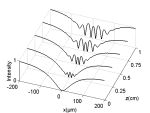
A Chinese team has performed simulations to help understand the occurrence of multiple solitary optical waves that are used to reconfigure optical beams.
Researchers have designed the first theoretical model that describes the occurrence of multiple solitary optical waves, referred to as dark photovoltaic spatial solitons.
Jean Francois Joanny awarded the 2012 Gentner-Kastler prize
- Details
- Published on 10 August 2012
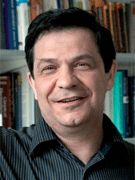
The German Physical Society (DPG) and the French Physical Society (SFP) will present the 2012 Gentner-Kastler award to Professor Jean Francois Joanny of the Institut Curie, France. The former Editor in Chief and current External Advisor of EPJ E is nominated for his extraordinary contributions to the theory of soft matter, particularly for his work in polymer physics and biological physics. The prize will be presented March 29, 2012, during the Meeting of the German Physical Society in Berlin.
The Gentner-Kastler prize is awarded jointly by the German Physical Society for works in physics done alternatively in Germany or France.
EPJ Special Topics - The indiscretions of a champagne bubble paparazzi
- Details
- Published on 10 August 2012

The physics and chemistry behind the fizz in bubbly.
The innermost secrets of champagne bubbles have just been unveiled in the Springer journal EPJ ST. This fascinating work is the brainchild of Gérard Liger-Belair, a scientist tackling champagne bubbles from both a physics and a chemistry perspective. Based at the University of Reims, in the heart of the region that gave champagne its name, the author is appropriately affiliated with the ‘effervescence team of the molecular and atmospheric spectrometry group’ and the ‘oenology and applied chemistry’ laboratory.
EPJ B - Market exchange rules responsible for wealth concentration
- Details
- Published on 10 August 2012

Next year’s Davos meeting could benefit from physicists’ insights on how new market rules help avoid wealth concentration.
Two Brazilian physicists have shown that wealth concentration invariably stems from a particular type of market exchange rules – where agents cannot receive more income than their own capital. The authors concluded that maximum inequalities ensue from free markets, which are governed by such seemingly fair rules. This study, published in EPJB was conducted by J. Roberto Iglesias and Rita de Almeida from the Brazilian National Institute of Science and Technology of Complex Systems, based in Porto Alegre. This Brazilian city is famous for hosting the World Social Forum, which is designed to find alternatives to economic liberalism.
EPJ B - Tiling pattern governs quasicrystals’ magnetism
- Details
- Published on 10 August 2012
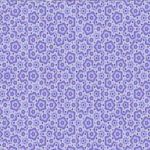
Review sheds light on the underlying magnetic qualities stemming from quasicrystals’ complex structure.
Few material classes have generated as much interest as quasicrystals. In a review published in EPJB quasicrystal expert Anuradha Jagannathan, from Paris-Sud University in Orsay, France, outlines the progress to date in the theory explaining the magnetic properties of these quasicrystals.




